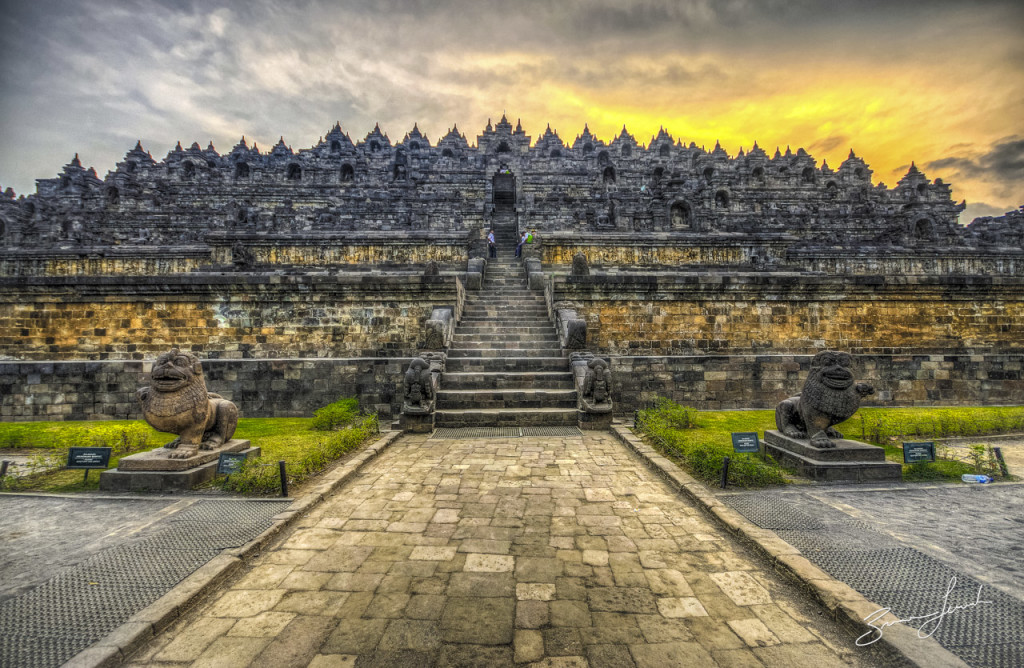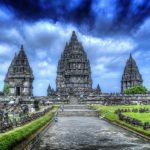Floating above the landscape of Central Java like a series of concentric circles that forms a giant mandala, there is Borobudur Temple, the largest Buddhist monument in the world. Even though there is no written record of who built the temple first, it is believed that Borobudur Temple was built between AD 780 and 840 when the Sailendra dynasty ruled the region. The building was abandoned for centuries and buried beneath layers of volcanic ash from Mount Merapi with only local people knew of its existence.
In 1814, the British ruler of Java, Sir Thomas Stanford Raffles, appointed a team led by Cornelius to investigate a hill, which, according to many local inhabitants, was the site of an ancient monument. The discovery got the Borobudur Temple worldwide attention, but it was not until 1835 that the entire area of the temple has been cleared. Unfortunately, the Dutch colonial government gave away eight containers full of Borobudur statues as presents for the King Chulalongkorn of Siam during his visit to Indonesia in 1896. The relics are still on display in the National Museum of Bangkok.
Restoration :
In 1885, the Chairman of the Archaeological Society in Yogyakarta, Yzerman, discovered the hidden reliefs at the base of the temple. These hidden reliefs revealed some Sanskrit instructions left for the carver, with very distinctive lettering that uncovered the date of the construction of the temple: the middle of the 9th century, the time when Sailendra dynasty ruled the area.
In 1907, a Dutchman Van Erp carried out a large scale restoration that finished in 1911. The work was significant and definitely safeguarded the temple for some time. However, many of the pieces were not put back in their original positions during the restoration.
In 1956, another assessment of the temple was made by a Belgian expert who was sent by UNESCO. His assessment concluded that water damage was significant, and would need to be stemmed if the temple was to have a long term future. The hill below the temple was eroding, the foundations were being weakened and also the reliefs were being eroded.
Preparatory work began in 1963, which amongst other things discovered that the hill was not a natural hill as it had always been assumed. Instead, some areas of the hill were loamy soil, mixed with stones and stone chips. The initial work assessed the scale of a restoration to be gigantic, and the Indonesian Government then submitted a proposal to UNESCO in 1968 outlining the works needed.
UNESCO gave full support and commenced work to raise funds for the restoration. From 1968 to 1983, research through to restoration took place under UNESCO. Specialists from the world over came to assist in the dismantling, and re-engineering of the site. A great deal of work was also done to develop procedures to prevent the microorganisms eating away the stone.
Finally, UNESCO listed Borobudur Temple as World Heritage Site in 1991.
Source : Borobudurpark.com


